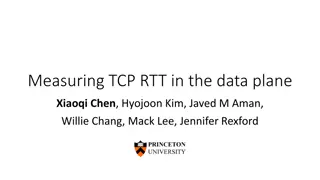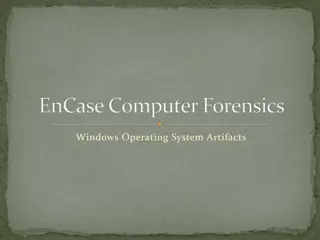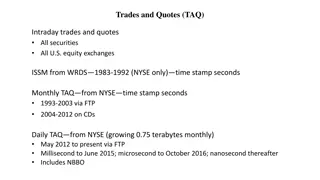Understanding Lamport Algorithm for Mutual Exclusion
Lamport Algorithm, presented by Prafulla Santosh Patil, is a permission-based algorithm utilizing timestamps to order critical section requests and resolve conflicts. It employs three types of messages: REQUEST, REPLY, and RELEASE, where each site manages a queue to store requests. By ensuring commu
0 views • 15 slides
Employee Time Tracking Guide for Cleveland State University Hourly Workers
This guide provides step-by-step instructions for hourly employees at Cleveland State University to clock in using Kronos Workforce Timekeeper and access their time records through myTime. It explains how to record timestamps, punch in or out for single or multiple jobs, view timecards, and check ac
0 views • 5 slides
If truly stolen crypto can be recovered in some way, can someone share the steps
1. Identify the Theft\n\nThe first step in recovering stolen cryptocurrency is to accurately identify and document the theft. This involves:\n\nNoticing unauthorized transactions in your wallet or exchange account.\nRecording all relevant transaction IDs, wallet addresses, and timestamps.\nCollectin
0 views • 15 slides
IEEE 802.11-22/2065r2 Timestamp Discussion
In the December 2022 IEEE document, Chris Beg of Cognitive Systems discusses the need for measurement timestamping at the receiver vs. transmitter for signal measurement applications like WLAN sensing and Doppler estimation. The document outlines the importance of timestamp placement for accurate me
2 views • 16 slides
Challenges of Time Synchronization in Distributed Systems
Distributed systems face challenges in synchronizing physical time due to varying network paths and clock drifts. While physical time synchronization is useful for tasks like file timestamps, it involves complexities such as estimating communication latency and improving time estimation algorithms l
0 views • 30 slides
Understanding TCP Round-Trip Time Measurement
This presentation delves into the importance of measuring TCP round-trip time in the data plane, highlighting key reasons such as security against BGP hijacks and IP spoofing, performance enhancements, and improving user Quality of Experience. It explores monitoring at a vantage point, TCP sequence
0 views • 12 slides
Geographical Latent Variable Models for Microblog Retrieval
Addressing challenges in microblog retrieval such as vocabulary mismatch and multi-faceted relevance signals. Explore opportunities in leveraging lexical and non-lexical information, including geographical meta-data. Discuss prior work on utilizing timestamps and re-tweets, while also highlighting t
0 views • 19 slides
Understanding Concurrency Control in Database Systems
Dig into the world of concurrency control in database systems, exploring topics such as pessimistic vs. optimistic concurrency, snapshot isolation, and the importance of timestamps in ensuring transaction order and recoverability. Learn about the mechanisms behind preventing unserializable schedules
0 views • 50 slides
Digital Forensics: Date and Time Analysis in Computer Systems
Conducting date and time analysis in computer forensics is essential to verify evidence accuracy. Tasks include adjusting time zone offsets, accessing registry keys, and adjusting zone settings for data integrity. Understanding timestamps aids in investigations for legal purposes.
0 views • 35 slides
Cutting-Edge Financial Data Sources and Systems
Explore comprehensive real-time trading and quote data from various U.S. equity exchanges like NYSE and Nasdaq, including information from the Trades and Quotes database, TotalView-ITCH system, and Nikkei Economic Electronic Databank System (NEEDS). These systems provide intricate details on trades,
0 views • 5 slides
Spanner Database Overview
Spanner is a globally distributed database system that offers configurable control, consistent commit timestamps, external consistency, and TrueTime API for handling distributed data. It uses a transaction model with two-phase locking and lock-free reads, providing globally sortable timestamps. The
0 views • 19 slides









